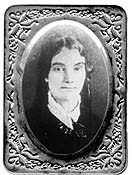And the Princess Lived Happily Ever After as a Lawyer
 I just finished reading Cinderella Ate My Daughter: Dispatches from the Front Lines of the New Girlie-Girl Culture.
I just finished reading Cinderella Ate My Daughter: Dispatches from the Front Lines of the New Girlie-Girl Culture.
As clichéd as it sounds, children’s things just seem different from when I was growing up. Toys, tennis rackets, toothbrushes, everything, it seems, can be purchased in girl or boy specific colors and styles today.
The premise of the book validated my observations. Children are at the center of a huge marketing scheme aimed at getting parents to buy more. How is it done?
The author, Peggy Orenstein, explains that segmenting the children’s market causes people to think they should purchase separately at each level of a child’s development, or for each gender. The concept of “the toddler” is an example. Orenstein “assumed that phase was something experts—people with PhDs at the very least—developed after years of research into children’s behavior.” (36) Her assumption was wrong.
Instead, it “[t]urns out, according to Daniel Cook, a historian of childhood consumerism, it was popularized as a marketing gimmick by clothing manufacturers in the 1930s.” (36)
And, what’s more, “[i]t was only after ‘toddler’ became common shoppers’ parlance that it evolved into a broadly accepted developmental stage.” (36)
Enter the princess market. The princess market was developed by a savvy strategist at Disney named Andy Mooney in 2000.


